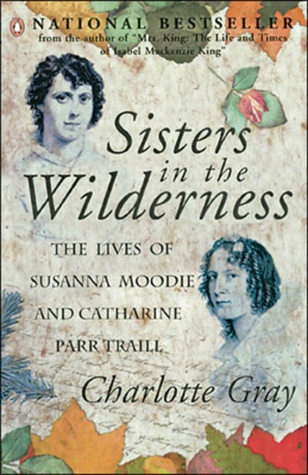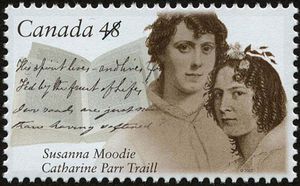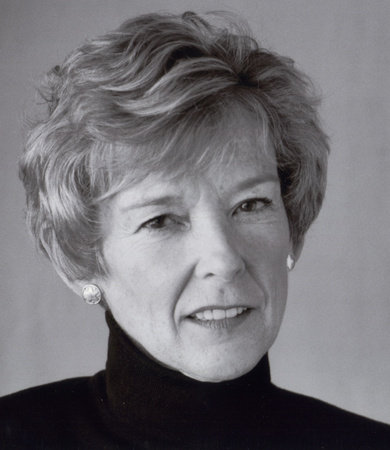Sisters in the Wilderness is a biography of Canadian pioneers Susanna Moodie and Catharine Parr Traill by Charlotte Gray. When I saw it on my mom’s bookshelf, I borrowed it for two reasons.
 This post contains affiliate links; as an Amazon associate, I earn from qualifying purchases.
This post contains affiliate links; as an Amazon associate, I earn from qualifying purchases.
First, I was interested in these women, sisters and writers. I studied their works briefly in my university Canadian literature class. I have a hardcover copy of Moodie’s book Roughing It in the Bush (a gift from my husband).
Both women were well-known writers in England before coming to Canada with their husbands. Here, they turned their pens to describing the country they discovered and their experiences as immigrants and pioneers.
Second, I was interested in how Charlotte Gray wrote about historical figures. I could write historical biographies as well. In some ways, that would be easier than trying to write historical fiction.
While I enjoyed Sisters in the Wilderness, however, I think I want to be more creative in my own writing. I want to get into my heroine’s head and to make her come alive for the readers, even if she lives two hundred years ago. I want to explore her life with all the leeway that historical fiction, rather than biography, can give me.
I flipped through the list of sources at the end of Sisters in the Wilderness, curious about how one researches two women to write a biography about them—especially with the detail Charlotte Grey went into. I was rather amazed at all the sources and the places she found information.
Moodie and Traill themselves left a lot of writing behind—besides their published works, both were prolific letter writers—but their siblings were also writers. I can see I’ve only touched the tip of the iceberg in my research on Charlotte Small; more digging will be required.
The Lives of Susanna Moodie and Catharine Parr Trail
Charlotte Gray begins Sisters in the Wilderness by introducing us to the two sisters in Canada, then takes us back to their growing-up years in England. Catharine and Susanna were the youngest sisters of the Strickland family, a family Gray compares to Jane Austen’s—poor gentility. All eight Strickland children were well educated and well read.

Their father passed away in 1818 and his children turned to writing and editing to earn a living. Like the Brontes, the Stricklands were an unusually prolific and literary family; five of six sisters and one brother were all published authors. While the sisters turned to writing at first as a way to make a bit of money, it soon became a passion (completely opposite of my experience!). Writing introduced them to London society and heady fame. Catharine wrote children’s stories while Susanna wrote romances for popular magazines.
During this time, Susanna became involved in the anti-slavery movement and wrote two tracts. Through an editor and mentor, she met John Moodie, a retired officer. Susanna married John in 1831. The following year, Catharine married John’s friend and fellow retired officer, Thomas Traill.
Catharine and Thomas were the first to emigrate to Canada, immediately after their marriage. Susanna and John followed them in 1832. Both families were facing economic difficulties in England and hoped for a better life in Canada, based in part on glowing descriptions of the country from their brother, Samuel Strickland.
 However, life as pioneers in Canada was very different than the genteel English life they had left behind. They suffered through the economic depression of 1836 (which motivated the sisters again to turn to writing as a source of income). Both sisters kept journals and also wrote long letters home to their families. These became the basis for Catharine’s book The Backwoods of Canada, published in 1836.
However, life as pioneers in Canada was very different than the genteel English life they had left behind. They suffered through the economic depression of 1836 (which motivated the sisters again to turn to writing as a source of income). Both sisters kept journals and also wrote long letters home to their families. These became the basis for Catharine’s book The Backwoods of Canada, published in 1836.
Their husbands both joined the militia in 1837 to fight the Upper Canada Rebellion. For a time, Catharine and Susanna lived within a mile of each other and were able to offer companionship and assistance to each other. As a mom, I could identify with this need for another mom to share your life with. In 1840, the Traills and Moodies left their farms “in the bush” and moved to Belleville.
It seems likely that their failure as pioneers was as much a result of temperament and personality as of anything else. The difficulties of clearing land and coping with climate, of communications, of finding and keeping agreeable hired persons were as great for the other settlers as for the Moodies, yet the Langtons, Stewarts, Traills, and Stricklands were relatively successful as pioneers and the books written by members of those families evidence a more positive, optimistic, and accepting approach to the pioneering experience than does Roughing it. ~ Biographi.ca
 In 1851, Catharine published the first Canadian children’s novel, Canadian Crusoes. A few years later, she also wrote The Canadian Settlers Guide, for fellow female immigrants. Susanna published her most famous book, Roughing It in the Bush, in 1852, about their time on the farm. The following year, she published the sequel, Life in the Clearings Versus the Bush, about life in town.
In 1851, Catharine published the first Canadian children’s novel, Canadian Crusoes. A few years later, she also wrote The Canadian Settlers Guide, for fellow female immigrants. Susanna published her most famous book, Roughing It in the Bush, in 1852, about their time on the farm. The following year, she published the sequel, Life in the Clearings Versus the Bush, about life in town.
Susanna died in 1885. Catharine died in 1899. Today, several of the sisters’ works are still in print. Gray explains that “plenty of contemporary Canadians have shared the feelings [the sisters] captured on paper about emigration.” She provided an introduction to a 2006 Penguin edition of Susanna Moodie’s Roughing It in the Bush. The sisters’ other works and letters, and Catharine’s scrapbooks of native flowers, are in Canadian archives. They stand tall among the remarkable women of Canadian history.
I thoroughly enjoyed the glimpse into the lives of Catherine and Suzanna and the contrasts between their lives in England and Canada. Not being an avid history buff, I was confused and I admit, even a bit bored by the many political and geographic references. However, in hindsight I have come to understand and appreciate the relevance and importance of these passages. ~ Monica, Older Mummy Still Yummy
Charlotte Gray provides a very readable biography of the sisters. For women interested in learning more about Catharine and Susanna, I recommend picking up a copy of their books, although they are much slower reading than Sisters in the Wilderness. Susanna’s biography also includes some of her poetry.
Looking for good books about Canada for kids? Check out my list of 100 Great Books for Canadian Tween Girls! It comes with a free printable check list and book report outline.
Meet Charlotte Gray, the author
 Charlotte Gray is one of Canada’s best-known writers, and author of ten acclaimed books of literary nonfiction. Born in Sheffield, England, and educated at Oxford University and the London School of Economics, she began her writing career in England as a magazine editor and newspaper columnist.
Charlotte Gray is one of Canada’s best-known writers, and author of ten acclaimed books of literary nonfiction. Born in Sheffield, England, and educated at Oxford University and the London School of Economics, she began her writing career in England as a magazine editor and newspaper columnist.
After coming to Canada in 1979, she worked as a political commentator, book reviewer and magazine columnist before she turned to biography and popular history.
Charlotte has been awarded five honorary doctorates, from Mount St. Vincent University, Nova Scotia, the University of Ottawa, Queen’s University, York University and Carleton University. In 2014, she was short-listed as “Author of the Year” by the Canadian Booksellers Association. She was also the 2003 Recipient of the Pierre Berton Award for distinguished achievement in popularizing Canadian history.
Charlotte lives in Ottawa with her husband George Anderson, and has three sons. To learn more about her and her books, drop by her website.
Have you heard of Susanna Moodie and Catharine Parr Trail before?

No Responses Yet